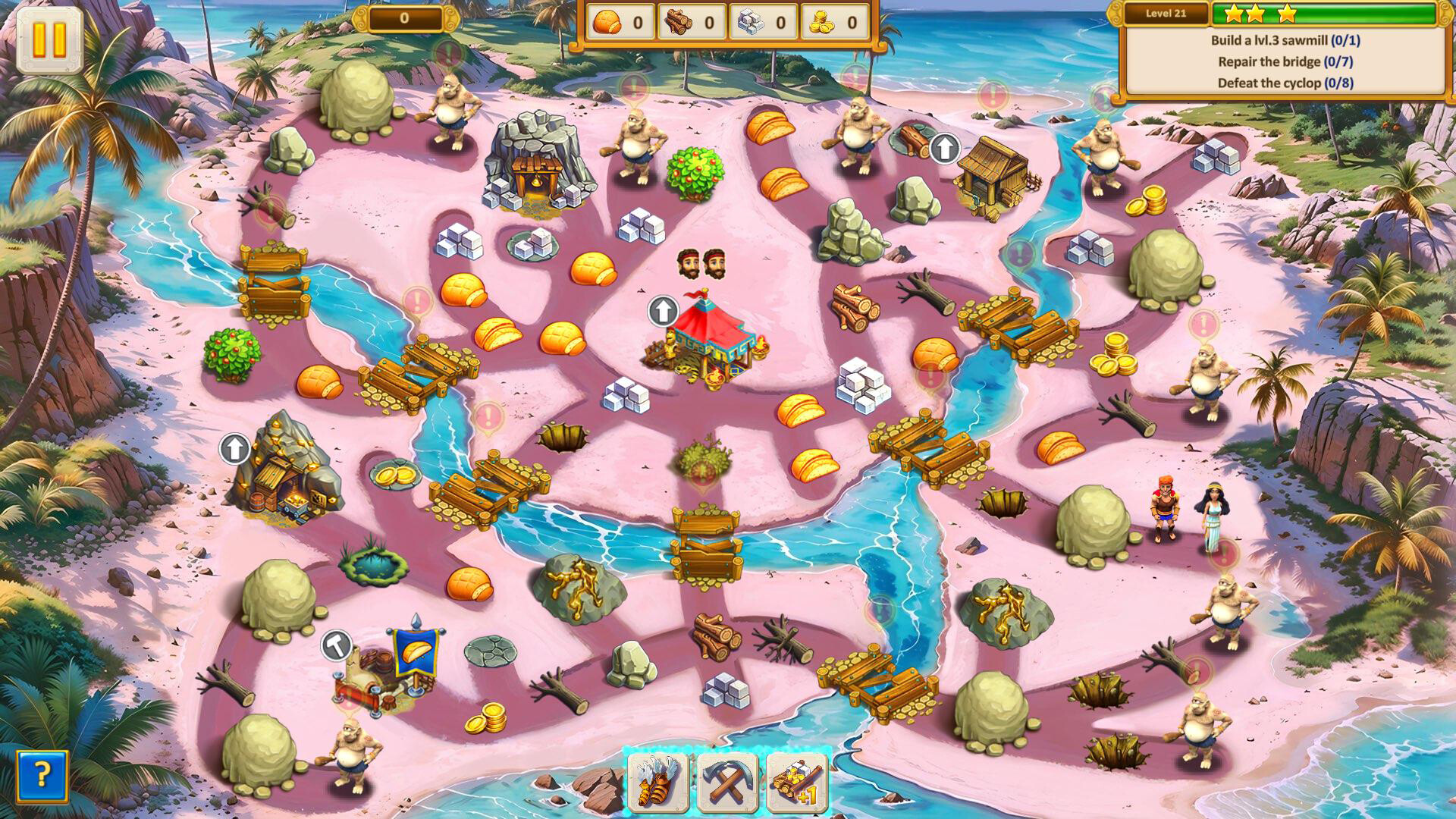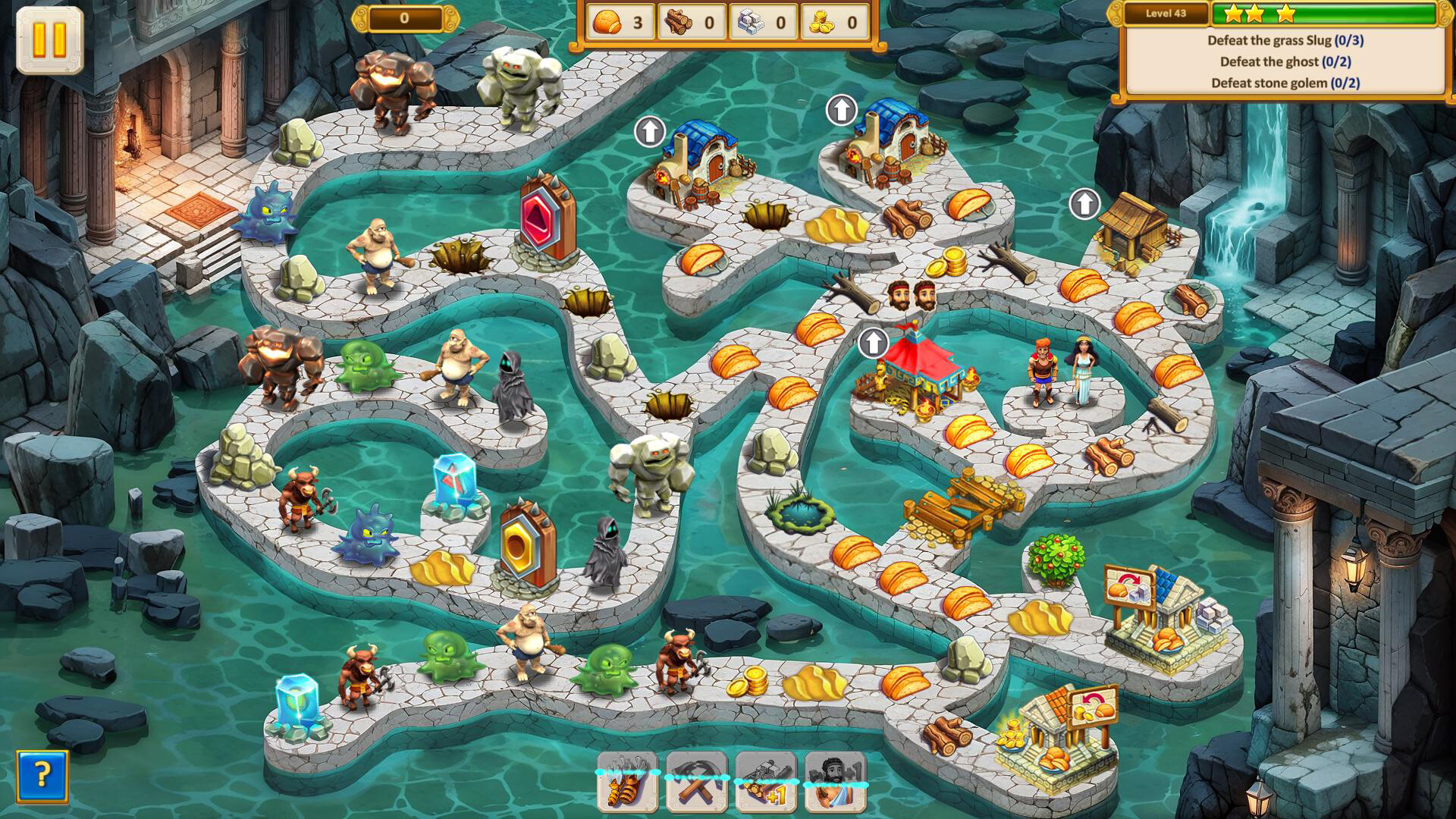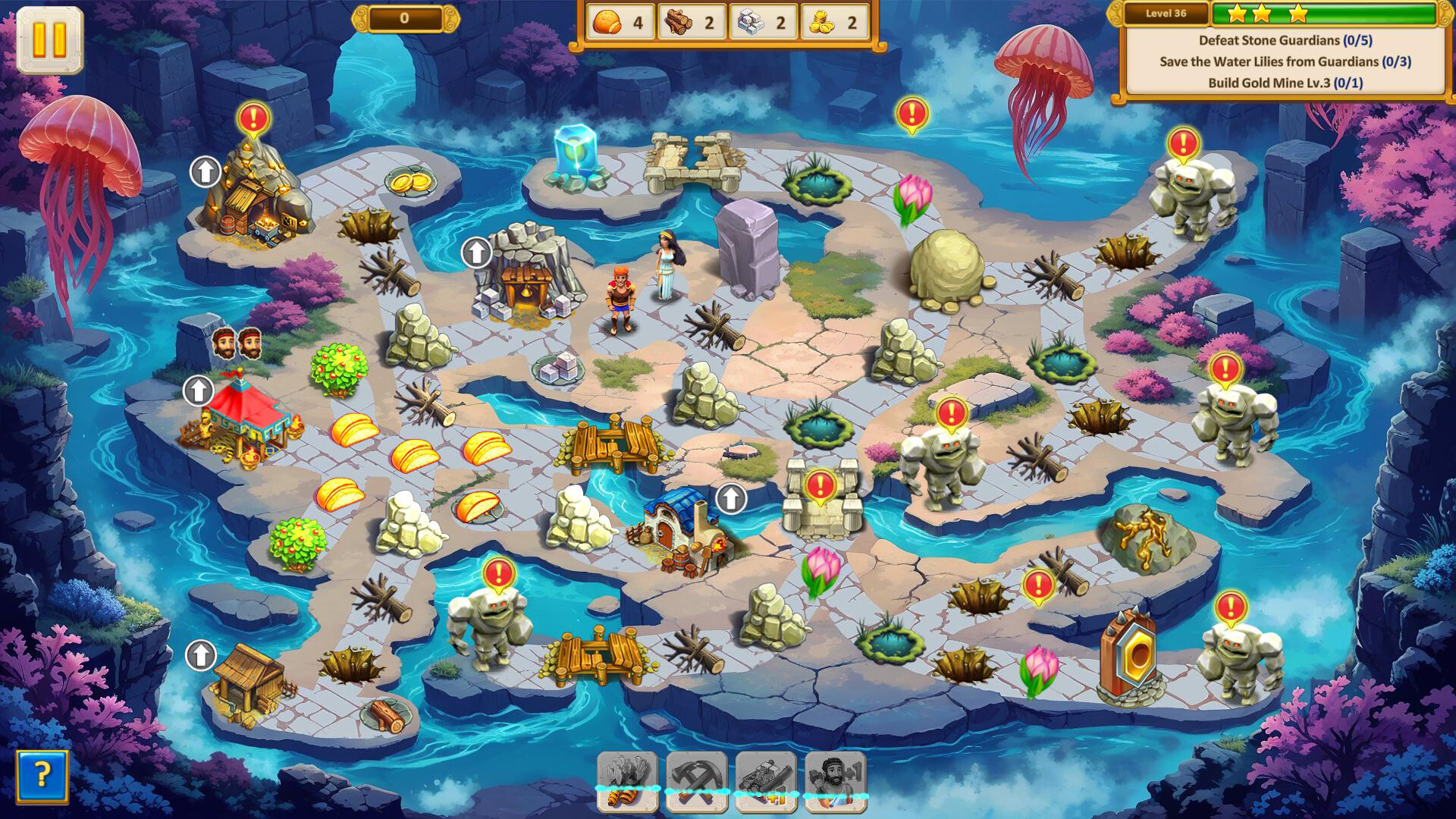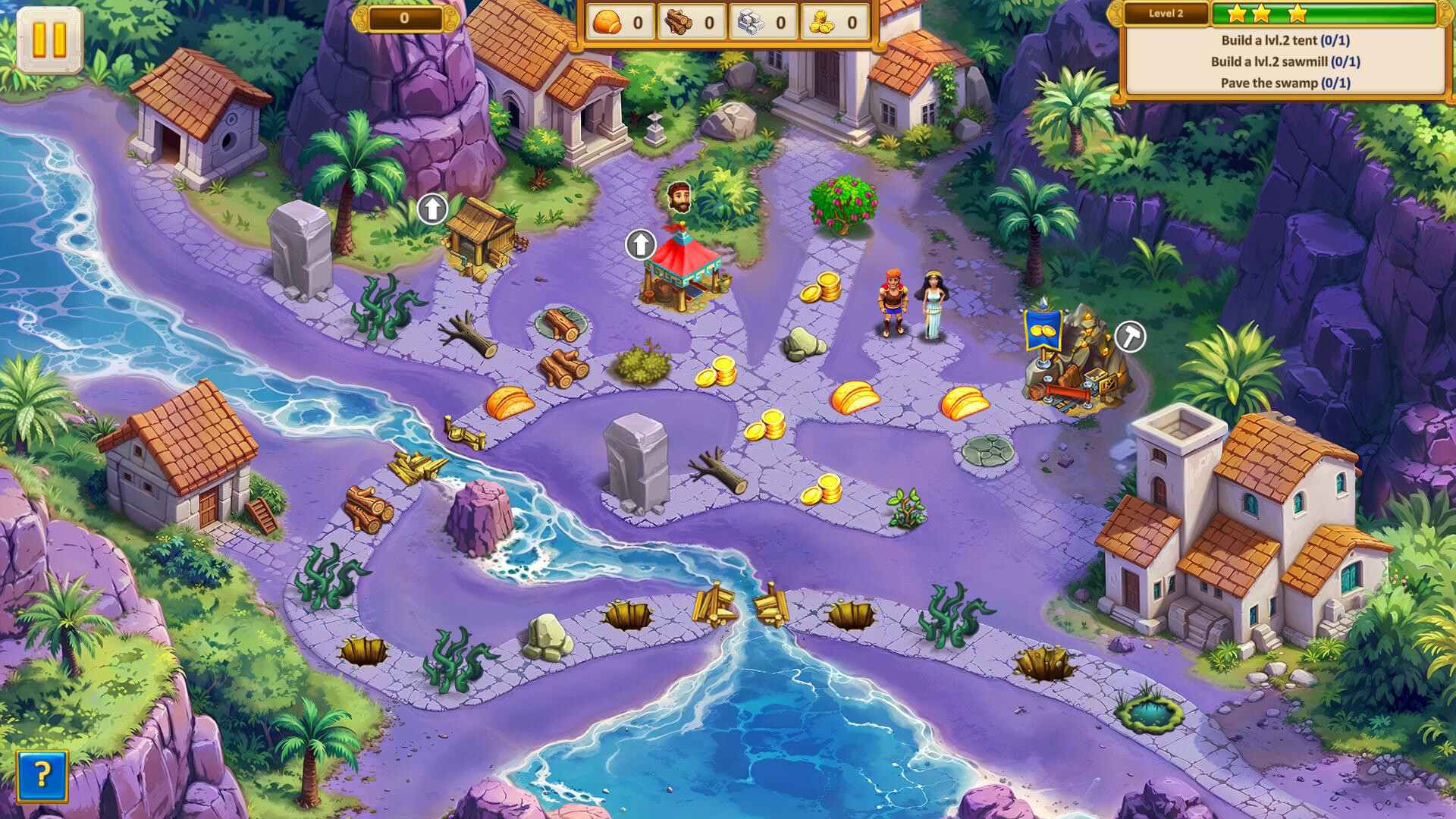Argonaut Agency: God of Storms Is the Only Relaxing Storm You’ll Ever Need
Introduction
Hello everyone. Let’s take the patient into triage, shall we? Argonaut Agency: God of Storms strolls into the ward with a stethoscope-worthy mix of mythic swagger and marketing gloss: Poseidon at the headline, Pelias, Jason, and Medea on the chart, and a promise of 50 levels that are somehow both “captivating” and “relaxing” while divine wrath hurls tridents at the waiting room. It’s due to unlock imminently—about 13 hours on the clock—and the storefront gives us just enough information to raise an eyebrow, scribble some notes, and prepare the defibrillator of skepticism.

“Experience the grandeur and danger of the ancient world, where gods shape the fate of mortals.”
What We Actually Know
Let’s chart the observable data—no speculative diagnoses, just the vitals as presented:
Quick Facts at a Glance
| Title | Argonaut Agency: God of Storms |
| Planned Release | 6 Aug, 2025 |
| Core Premise | Heroes confront divine wrath across cursed/monster-ruled islands |
| Content Style | “Epic and vibrant comics” with a gripping narrative |
| Levels | 50 |
| Languages | English, French, German, Russian |
| AI Use | Game background and marketing |
| System Requirements | Low; 1 GB RAM, small storage footprint |
Features Under the Microscope
“A unique hero—Poseidon, the mighty ruler of the seas!” That’s front and center. It’s a bold hook, sure, though the page doesn’t clarify how that manifests in play. If you tell me I’ve got the Sea Lord on the roster, I want to know if he’s a cosmetic cameo or an actual lever that changes how I approach levels. The storefront doesn’t say, so we park that in the “needs labs” tray.
“Unpredictable story twists.” Always nice to promise a rollercoaster, but unpredictability is the kind of word that sounds great until it’s a placebo. We’re told to expect twists “at every turn,” and while my clinical experience with storefront hyperbole suggests moderation is a better dosage, we’ll reserve final judgment until the charts—sorry, levels—prove it.
“Epic and vibrant comics with a gripping narrative.” Now we have texture. If the storytelling is delivered via comic-style panels, that at least sets tonal expectations: bright, stylized, and punchy. For players who like a clear, visual narrative between levels, that’s a positive sign. The page positions the atmosphere as Ancient Greece where gods and heroes clash over the world’s fate—clean, readable theming is often the difference between a speedrun and a slog.
“Exciting and varied ways to complete each level” and “each set of locations introduces new gameplay mechanics.” Those are the two real pressure points. Variety is the antidote to repetition; if every island introduces something new, that’s your anti-churn medicine. But again, we’re in the waiting room: the page never lists what those mechanics are. We’re handed a sealed loot box labeled “trust us.”
“Increased dynamics and engagement with two workers appearing almost at the start of the game.” A specific detail at last. If two workers arrive early, the pace should be brisk. That suggests a game that wants you multitasking from the opening minutes. For players who dislike slow onboarding, that’s a good sign. For those who prefer to sip their ambrosia, not chug it, this could feel like the devs hitting the turbo button before you’ve finished the tutorial cough test.
“50 levels of captivating and relaxing gameplay!” Let’s not ignore the tonal whiplash when you say “divine wrath,” “monsters,” and “curses,” then prescribe “relaxing.” Maybe the design goal is chill challenge—an oxymoron that can work—but the storefront doesn’t reconcile that tension. We’re told it’s both a thunderstorm and a warm bath. As a doctor, I don’t recommend mixing lightning and bubble soak.
Presentation and Style
The pitch leans heavily on the mythic setting: Poseidon-themed locations, a trio of classical heroes in trouble, and “new, diverse, and breathtaking locations shaped by the will of the Sea Lord.” If the art sells that fantasy—even via static comic frames—that’s a strong aesthetic spine. The promise of “accessible tutorials” is good bedside manner: less time fumbling with the IV line, more time actually playing.
However, there’s notable charting-out: the page leaves the Developer and Publisher fields blank and omits the genre. That’s not a mortal sin, but it is a missing pulse. Players use those to calibrate expectations. Without them, you’re asking the audience to queue for a boss fight without knowing the damage type.
Availability and Specs
It isn’t available yet but is slated to unlock on 6 Aug, 2025. The system requirements are featherweight: 1 GB RAM, tiny storage, and old DirectX baselines. Translation: just about any machine on a shoestring IV drip will run it. Language support covers English, French, German, and Russian. There are no user reviews yet at the time of listing. Also, the developers disclose AI usage for “Game background and marketing.” That transparency is appreciated; it tells you where the automation stops and the design should begin.



The Rant: Hype vs. Substance
There’s a recurring pattern in storefront pitches: the grandiose promise of “epic” this and “unpredictable” that coupled with a reluctance to actually show the systemic guts. Here, we get style notes (comics), a theming anchor (Poseidon), and a structural tease (new mechanics per location set), but nothing mechanical enough to chew on. It’s like ordering a hearty gyro and receiving a menu description with no plate—smells great, tastes theoretical.
The standout concrete note—two workers appearing almost at the start—suggests the pacing is snappier than your average hand-holding opening. That’s a rare bone to throw and appreciated. It implies a game that opens on “Act 2 energy,” skipping the 10-minute tutorial purgatory. For some, that’s chef’s kiss. For others, it’ll feel like getting dropped into a boss arena with the UI still mapping to your motor cortex. Either way, it’s a direction, and direction is better than a foggy maze.
Then we have the tonal tango: “captivating and relaxing” meets “wrathful gods and cursed islands.” Can that work? Absolutely. But the page offers no connective tissue explaining how the flow stays serene while Medusa is presumably out there billing insurance for petrification therapy. Without examples, the promise lives in Schrödinger’s cat carrier—both soothing and stormy until we open the box.
Lastly, leaving the Developer and Publisher fields blank while also omitting the genre isn’t a great look. It’s like refusing to tell the patient who’s performing the surgery and what kind of procedure it is. Confidence is part of the cure. If you want the audience to hit “Wishlist,” you don’t equip them with empty tooltips.
Final Verdict
Clinically speaking, the symptoms are mixed. The mythic premise is clean; the comic presentation hints at flavor; the early two-worker pace could keep the runtime nimble; and 50 levels is a straightforward, digestible scope. On the other hand, the genre is unlisted, the dev/pub are unlisted, and the feature list leans on abstract promises rather than demonstrable mechanics. With AI disclosed for background and marketing, the copy reads tidy but sterile—polished vitals, few stress tests.
Overall impression: uncertain. There’s enough here to keep curiosity afloat, but not enough detail to chart a course. Wishlist if the Ancient Greek theme and comic-forward storytelling speak to you; otherwise, wait for hands-on reports once the floodgates open.
And that, ladies and gentlemen, is entirely my opinion.
Argonaut Agency: God of Storms, https://store.steampowered.com/app/3784080/Argonaut_Agency_God_of_Storms/
- Title: Argonaut Agency: God of Storms
- Release date: 6 Aug, 2025 (not yet available at the time of listing; unlocks soon)
- Premise: During celebrations honoring Poseidon, Pelias, Jason, and Medea trigger divine wrath and traverse mysterious islands, each ruled by a monster or a curse.
- Stated features include: a “unique hero—Poseidon,” story twists, epic/vibrant comics, new locations shaped by the Sea Lord, varied ways to complete levels, accessible tutorials, new mechanics per location set, early appearance of two workers, and 50 levels.
- Languages (Interface/Subtitles): English, French, German, Russian.
- AI disclosure: used for “Game background and marketing.”
- System requirements: Minimal—OS 7+, 1 GB RAM, DirectX 9.0 (recommended notes OS 10, DirectX 11).
- Developer/Publisher fields are not listed on the page.
- Genres are not specified on the page.
- No user reviews yet.
Quick Facts at a Glance
| Title | Argonaut Agency: God of Storms |
| Planned Release | 6 Aug, 2025 |
| Core Premise | Heroes confront divine wrath across cursed/monster-ruled islands |
| Content Style | “Epic and vibrant comics” with a gripping narrative |
| Levels | 50 |
| Languages | English, French, German, Russian |
| AI Use | Game background and marketing |
| System Requirements | Low; 1 GB RAM, small storage footprint |
Features Under the Microscope
“A unique hero—Poseidon, the mighty ruler of the seas!” That’s front and center. It’s a bold hook, sure, though the page doesn’t clarify how that manifests in play. If you tell me I’ve got the Sea Lord on the roster, I want to know if he’s a cosmetic cameo or an actual lever that changes how I approach levels. The storefront doesn’t say, so we park that in the “needs labs” tray.
“Unpredictable story twists.” Always nice to promise a rollercoaster, but unpredictability is the kind of word that sounds great until it’s a placebo. We’re told to expect twists “at every turn,” and while my clinical experience with storefront hyperbole suggests moderation is a better dosage, we’ll reserve final judgment until the charts—sorry, levels—prove it.
“Epic and vibrant comics with a gripping narrative.” Now we have texture. If the storytelling is delivered via comic-style panels, that at least sets tonal expectations: bright, stylized, and punchy. For players who like a clear, visual narrative between levels, that’s a positive sign. The page positions the atmosphere as Ancient Greece where gods and heroes clash over the world’s fate—clean, readable theming is often the difference between a speedrun and a slog.
“Exciting and varied ways to complete each level” and “each set of locations introduces new gameplay mechanics.” Those are the two real pressure points. Variety is the antidote to repetition; if every island introduces something new, that’s your anti-churn medicine. But again, we’re in the waiting room: the page never lists what those mechanics are. We’re handed a sealed loot box labeled “trust us.”
“Increased dynamics and engagement with two workers appearing almost at the start of the game.” A specific detail at last. If two workers arrive early, the pace should be brisk. That suggests a game that wants you multitasking from the opening minutes. For players who dislike slow onboarding, that’s a good sign. For those who prefer to sip their ambrosia, not chug it, this could feel like the devs hitting the turbo button before you’ve finished the tutorial cough test.
“50 levels of captivating and relaxing gameplay!” Let’s not ignore the tonal whiplash when you say “divine wrath,” “monsters,” and “curses,” then prescribe “relaxing.” Maybe the design goal is chill challenge—an oxymoron that can work—but the storefront doesn’t reconcile that tension. We’re told it’s both a thunderstorm and a warm bath. As a doctor, I don’t recommend mixing lightning and bubble soak.
Presentation and Style
The pitch leans heavily on the mythic setting: Poseidon-themed locations, a trio of classical heroes in trouble, and “new, diverse, and breathtaking locations shaped by the will of the Sea Lord.” If the art sells that fantasy—even via static comic frames—that’s a strong aesthetic spine. The promise of “accessible tutorials” is good bedside manner: less time fumbling with the IV line, more time actually playing.
However, there’s notable charting-out: the page leaves the Developer and Publisher fields blank and omits the genre. That’s not a mortal sin, but it is a missing pulse. Players use those to calibrate expectations. Without them, you’re asking the audience to queue for a boss fight without knowing the damage type.
Availability and Specs
It isn’t available yet but is slated to unlock on 6 Aug, 2025. The system requirements are featherweight: 1 GB RAM, tiny storage, and old DirectX baselines. Translation: just about any machine on a shoestring IV drip will run it. Language support covers English, French, German, and Russian. There are no user reviews yet at the time of listing. Also, the developers disclose AI usage for “Game background and marketing.” That transparency is appreciated; it tells you where the automation stops and the design should begin.



The Rant: Hype vs. Substance
There’s a recurring pattern in storefront pitches: the grandiose promise of “epic” this and “unpredictable” that coupled with a reluctance to actually show the systemic guts. Here, we get style notes (comics), a theming anchor (Poseidon), and a structural tease (new mechanics per location set), but nothing mechanical enough to chew on. It’s like ordering a hearty gyro and receiving a menu description with no plate—smells great, tastes theoretical.
The standout concrete note—two workers appearing almost at the start—suggests the pacing is snappier than your average hand-holding opening. That’s a rare bone to throw and appreciated. It implies a game that opens on “Act 2 energy,” skipping the 10-minute tutorial purgatory. For some, that’s chef’s kiss. For others, it’ll feel like getting dropped into a boss arena with the UI still mapping to your motor cortex. Either way, it’s a direction, and direction is better than a foggy maze.
Then we have the tonal tango: “captivating and relaxing” meets “wrathful gods and cursed islands.” Can that work? Absolutely. But the page offers no connective tissue explaining how the flow stays serene while Medusa is presumably out there billing insurance for petrification therapy. Without examples, the promise lives in Schrödinger’s cat carrier—both soothing and stormy until we open the box.
Lastly, leaving the Developer and Publisher fields blank while also omitting the genre isn’t a great look. It’s like refusing to tell the patient who’s performing the surgery and what kind of procedure it is. Confidence is part of the cure. If you want the audience to hit “Wishlist,” you don’t equip them with empty tooltips.
Final Verdict
Clinically speaking, the symptoms are mixed. The mythic premise is clean; the comic presentation hints at flavor; the early two-worker pace could keep the runtime nimble; and 50 levels is a straightforward, digestible scope. On the other hand, the genre is unlisted, the dev/pub are unlisted, and the feature list leans on abstract promises rather than demonstrable mechanics. With AI disclosed for background and marketing, the copy reads tidy but sterile—polished vitals, few stress tests.
Overall impression: uncertain. There’s enough here to keep curiosity afloat, but not enough detail to chart a course. Wishlist if the Ancient Greek theme and comic-forward storytelling speak to you; otherwise, wait for hands-on reports once the floodgates open.
And that, ladies and gentlemen, is entirely my opinion.
Argonaut Agency: God of Storms, https://store.steampowered.com/app/3784080/Argonaut_Agency_God_of_Storms/


